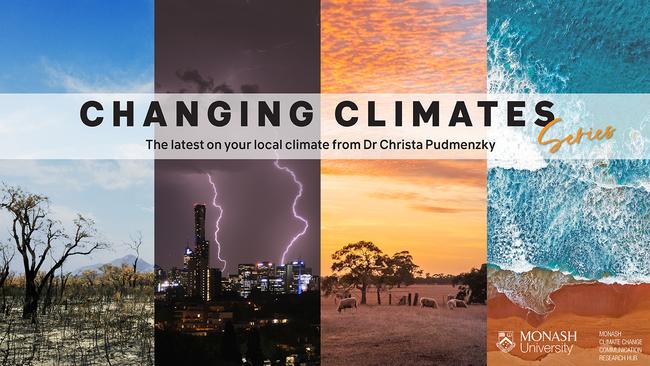The beef between cattle and climate change
Host of South Burnett's Changing Climates series, Dr Christa Pudmenzky, explores how we can adapt our food and agricultural practices in the face of rising temperatures.

Hyperlocal
Don't miss out on the headlines from Hyperlocal. Followed categories will be added to My News.
Since the start of the industrial revolution in the 18th century, greenhouse gas emissions created by human activity have skyrocketed.
Excessive amounts of greenhouse gases – including carbon dioxide, methane and water vapour – trap additional heat in our atmosphere and warm the planet.
We can see the impacts of this in Australia, where the average annual temperature has risen by around 1.4C since 1910.
We can see evidence of this warming in South Burnett, with Queensland's hottest May day around 1C warmer than in the early 1970s.

These changes may not seem like much, but small shifts in average temperature have had widespread consequences for local agriculture, including farm damage and productivity losses.
This is not a one way street – agriculture also contributes to climate change, being the fourth largest source of emissions in Australia.
Most of these emissions come from cattle and sheep which produce methane when they digest their food.
Increasing amounts of methane in our atmosphere has played a key role in changing our climate, as it is 25 times more potent than carbon dioxide, making it highly effective at trapping heat.
Reducing emissions:
There are many potential options to help cut methane production in animals.
Research has found adding more fats, oils and seaweed to animal feed can reduce the amount of methane they expel.
Increasing farmland biodiversity and moving animals to fresh paddocks will help plants and soil thrive while further reducing emissions.
We can also make changes at home.
A good start is buying locally grown food and products from businesses with sustainable practices.
Another option is to reduce the amount of meat we eat.
Skipping just one serve of beef a week for a year saves the equivalent emissions of a car trip from Brisbane to Rockhampton.
Alternatively, we can switch to meats that have a lower environmental impact.
Kangaroo is an abundant meat source across Australia and provides a more sustainable alternative to beef or lamb as it creates far less emissions.
It's also lean and full of important proteins, vitamins and minerals.
In addition, the soft paws of kangaroos cause less damage to Australian soil than cattle, allowing crops and native species to flourish.
By adopting some simple, sustainable practices, we can continue to enjoy our food and support Aussie farmers for a healthier planet.
Hear from your community:

Want more information on how your climate is changing? Check out the last article in this series.
Dr Christa Pudmenzky is a climate scientist at the University of Southern Queensland.
This column is part of a collaboration between Monash University and News Corp to deliver hyperlocal weather and climate information.

